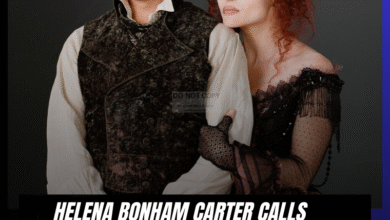Audrey Hepburn’s Secret Role in WWII: How She Helped the Dutch Resistance Behind Closed Doors
OPINION: This article may contain commentary which reflects the author's opinion.
Audrey Hepburn is known worldwide for her iconic roles in films such as Breakfast at Tiffany’s and Roman Holiday, which cemented her place in Hollywood history. However, there is a lesser-known and deeply moving aspect to Hepburn’s life, one that reflects her bravery and commitment to the fight against tyranny during World War II. Before she became a beloved movie star, Hepburn was a young girl caught in the turmoil of Nazi-occupied Europe, and she played a crucial role in supporting the Dutch Resistance.
Early Life and the War’s Impact
Born in 1929 in Belgium, Hepburn’s family relocated to the Netherlands when she was young, hoping the country would remain neutral, as it had in World War I. But as the Nazis expanded their control over Europe, the Netherlands soon found itself under occupation. Hepburn was only 10 years old when the war began in 1939, and by 1942, the situation had become far more dire for her and her family. Her mother, fearing for their safety, changed Hepburn’s name to Edda van Heemstra, a precaution in case the Nazis took over the Netherlands, which they did within months.
As the war progressed, Hepburn and her family faced more profound challenges. Her uncle was executed by the Nazis for his involvement in resistance activities, and the impact of the Nazi occupation began to affect her on a personal level. “We saw young men put against the wall and shot,” Hepburn later recalled. “They’d close the street and then open it, and you could pass by again.” These harrowing experiences would shape Hepburn’s worldview and motivate her to help her country in any way she could.
Hepburn’s Role in the Dutch Resistance
At the time of the occupation, Hepburn had already gained some local fame for her ballet skills, having trained in the art form since childhood. This talent would later serve as a significant tool in her covert support for the Dutch Resistance. In 1944, Hepburn began using her performances to raise money for the resistance movement, helping those affected by the war and supporting the people fighting back against the Nazi regime.
During this period, Hepburn would organize illegal musical performances in secret locations, often in private homes where the windows and doors were shut to avoid detection. “I did indeed give various underground concerts to raise money for the Dutch Resistance movement,” she explained in an interview years later. “I danced at recitals, designing the dances myself. I had a friend who played the piano and my mother made the costumes. They were very amateurish attempts, but nevertheless at the time, when there was very little entertainment, it amused people and gave them an opportunity to get together and spend a pleasant afternoon listening to music and seeing my humble attempts.”
These underground recitals were not only a source of entertainment but also a form of resistance, helping to fund the Dutch Resistance’s operations, including hiding Jews and supporting other underground efforts. The audience, often people who had been affected by the war, were grateful for the chance to experience some form of normalcy and beauty during such a dark time.
The Risks and Courage of Hepburn’s Involvement
What made Hepburn’s involvement even more courageous was the risk she faced every time she performed. As the Nazi occupation intensified, any association with the resistance could have led to execution or imprisonment. Despite the dangers, Hepburn continued to support the resistance, performing these secret recitals with no applause afterward, a stark contrast to the loud ovations she would receive in her later career as a Hollywood star. The fear of being discovered was ever-present, but Hepburn’s commitment to her cause pushed her to keep going, even when the danger was at its peak.
Hepburn’s ballet performances were just one of the many ways she contributed to the war effort. She also helped with the distribution of pamphlets and messages for the resistance. She later spoke about the emotional toll these experiences took on her, reflecting on the hardships and the emotional maturity she gained during this time.
Legacy and Reflection
Although Audrey Hepburn’s time with the Dutch Resistance occurred long before she became an international movie star, it remained a formative chapter in her life. The actress would later describe her wartime experiences as ones that influenced her deeply and shaped her as a person. Her resilience, empathy, and determination during the war years carried through to her career in Hollywood, where she became a symbol of grace, kindness, and strength.
Hepburn’s work with the Dutch Resistance was largely unknown to the public until much later in her life, as she became more involved with humanitarian causes and charity work. She went on to work with organizations such as UNICEF, advocating for children in need and using her fame to bring attention to global issues. But her early role in the resistance remained one of the most personal and powerful contributions of her life.
Conclusion
Audrey Hepburn’s story is one of triumph, not just on the big screen but also in the face of adversity during World War II. Through her ballet performances and dedication to the Dutch Resistance, she showed incredible courage and a deep commitment to helping others, even in the darkest of times. Her legacy as an actress is well known, but it is her acts of bravery and selflessness during the war that continue to inspire people to this day. Hepburn’s life was a testament to the strength of the human spirit, and her role in helping the Dutch Resistance remains a significant and often overlooked part of her incredible journey.



